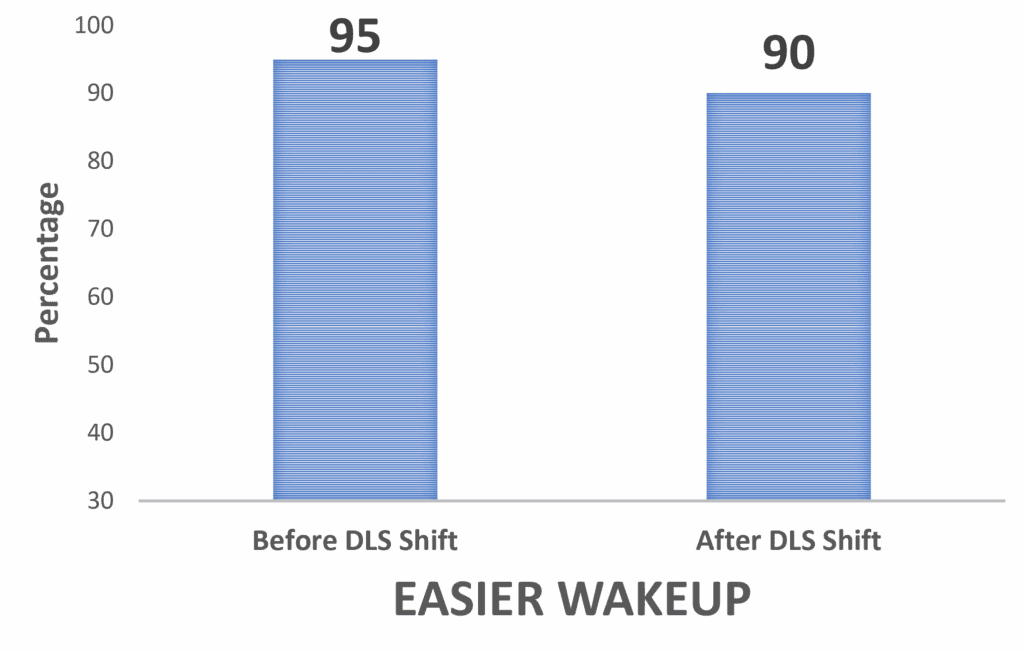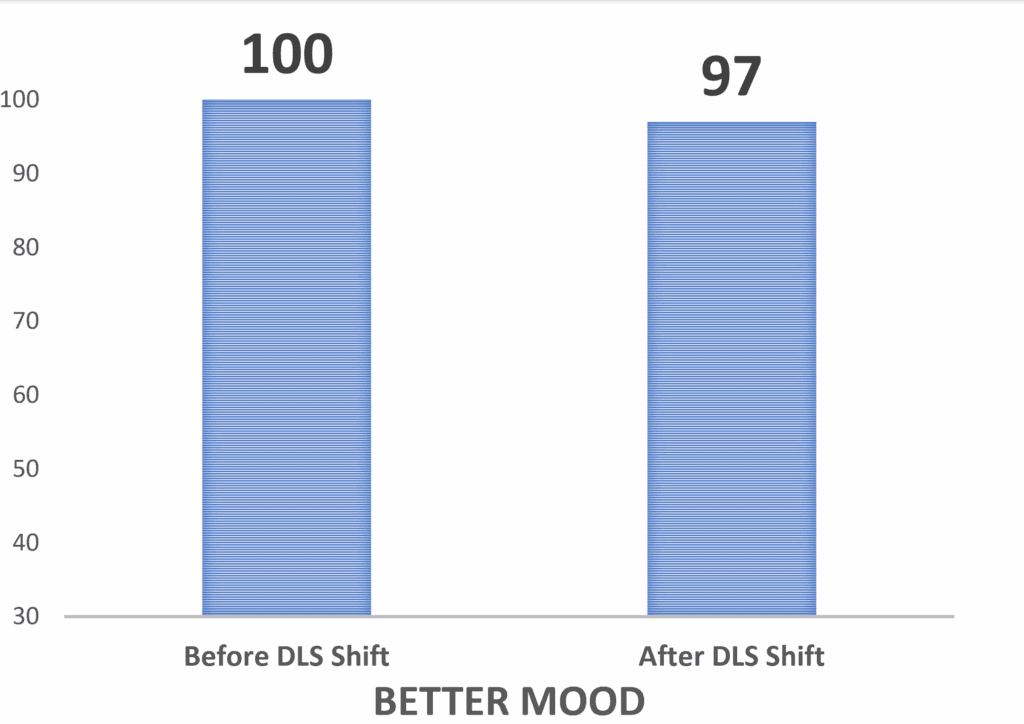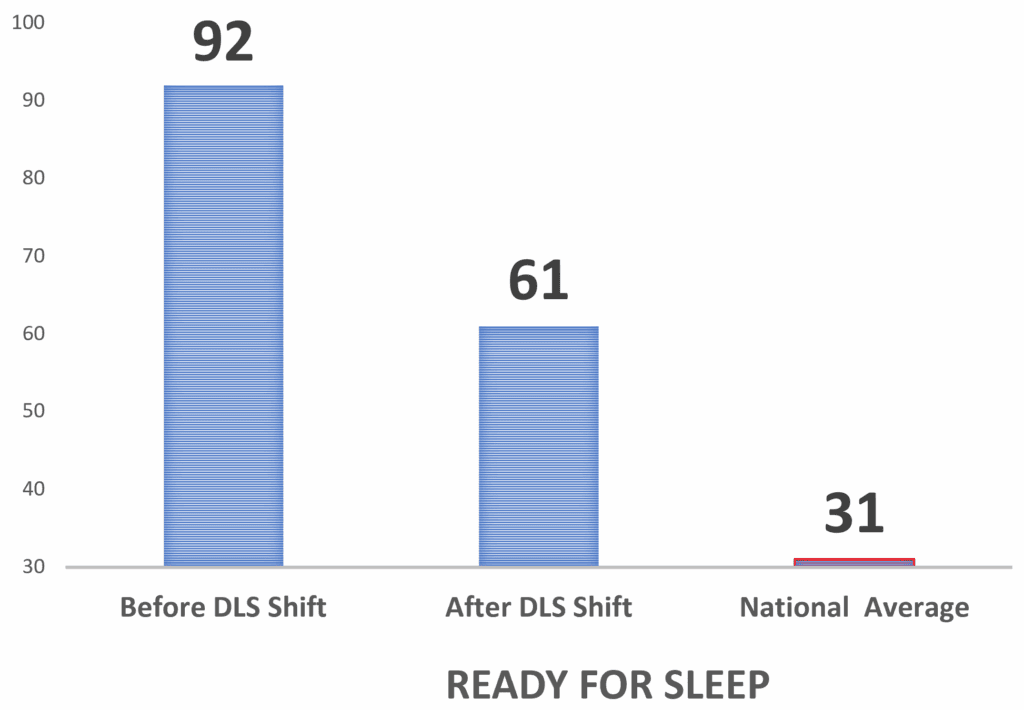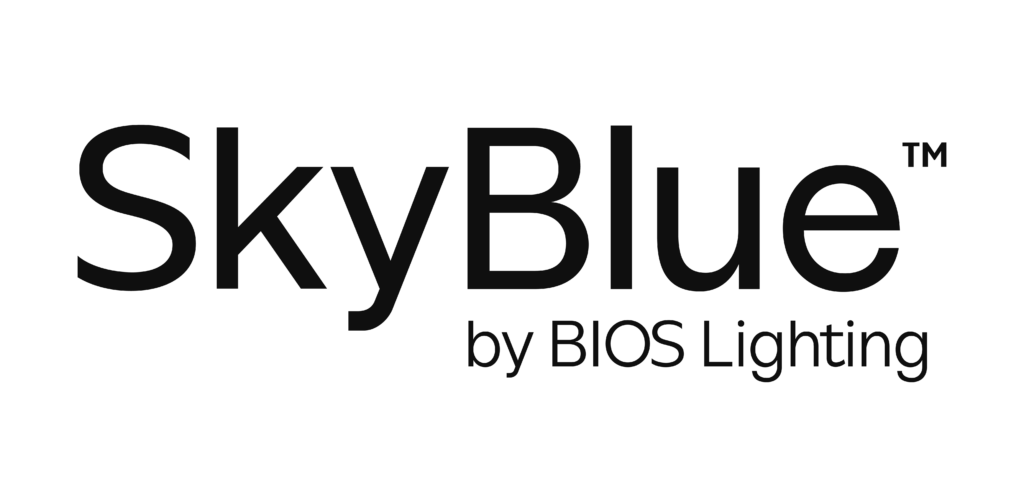The Dark Side of Daylight Savings
The circadian rhythm is primarily influenced by natural light cues, particularly sunlight. When daylight savings time begins or ends, our exposure to natural light shifts abruptly, confusing our internal clocks. One hour of clock/sun delay is associated with temporary effects like disrupted sleep, mood changes, daytime drowsiness, and decreased school performance. Over time, these seemingly minor shifts have major long-term effects (Giuntella & Mazzonna 2019) like:
- 10% increased risk of obesity
- 19% increased risk of heart attacks
- 16% increased risk of heart disease
- 5% risk of type 2 diabetes
In addition, vulnerable populations, such as those with existing mental health conditions, may experience exacerbations in symptoms due to disrupted sleep and altered daily routines. The fall shift back one hour in combination with the approach of winter’s shortened days is particularly disruptive to circadian timing (Roenneberg et al. 2019).
Neuroscience and clinical research strongly suggest that by bringing the right spectra of sun and sky light into your home at the right times of the 24-hour day, your body clocks and social clocks can be realigned and resist shocks like jetlag or daylight saving time.
Using SkyView™ light to improve circadian health: A school children’s field study
We initially developed and tested SKYVIEW circadian lighting for increased mood, sleep, focus, and productivity in office environments (Grant et al. 2023, SKYVIEW 2023) and demonstrated powerful effects. Although this circadian technology has been used in diverse applications from neonatal ICU to the International Space Station (Brainard et al. 2016), we wanted to target a widely experienced situation: children who were having difficulty waking in the morning on typical school days and across daylight saving time. The prediction would be kids who are easier to wake, have more energy and focus in the morning, so the task of being a parent is at least a little easier.
Study Design
We recruited 40 elementary-school aged children whose parents determined that they have trouble waking up in the morning, (i.e. their bodies were not ready to wake up yet).
Parents received a SkyView™ 2 lamp for each child with video instructions on best use cases.
Lamps were placed in the child’s bedroom and the lighting scheduled to revolve around the time they need to wake up.
Parents used SkyView™ for 7 weeks, filling out periodic surveys to record any changes in their children’s morning and night behavior. Survey questions centered around improvements in:
- waking up more easily in the morning on school days;
- their mood in the morning on school days;
- being more ready for bed at their scheduled bed time.
Study Part 1: Effect of SkyView™ lighting over 5 weeks of school.
Study Part 2: Effect of SkyView™ lighting for 2 weeks across fall daylight savings time.
SkyView™ Improves Child Sleep Transitions and Mood
The children in the study were chosen by parents specifically because they exhibited one or more sleep/waking related challenges. The positive results of the lighting intervention study were dramatic and consistent across almost all participants. The effects of SkyView™ lighting on improving children’s sleep, waking and mood were previously reported by parents in Part 1 of the study (SkyView™ 2024).
- 92% easier wake up
- 100% better mood
- 92% ready for bed
SkyView™ Dampens Daylight Savings Effects
In part 2 of the Parent Study, the effect of the fall daylight savings shift was measured when children had SkyView™ lamps by their beds. We found that Children with SkyView™ light exposure prior to the DLS time still found it easier to wake up post shift (Figure 1) relative to baseline (4% pre intervention, data not shown).

We saw a similar slight decrease in the percentage of parents reporting their child had improved mood after the DLS shift, but still surprisingly high (Figure 2).
“She was tired on the first day but back to normal the second one.” –Katia M. – Parent Study Participant

The most significant change in child sleep/waking behavior over the DLS shift was reported by parents in relation to readiness for sleep (Figure 3). Prior to daylight savings, 92% of the children were able to go to sleep with no effort at their bedtime when using SkyView™ light at bedside. Following the DLS shift, only 61% of children were reported ready for sleep. This drop was still a 2X increase in readiness for sleep as compared to the national average of 31% (AASM Survey 2019).

Better light. Better health. Better kids.
Healthy light is as fundamental as healthy food and water. Standard indoor lighting and bright light at night weaken our circadian rhythm that takes it cue from the sun, putting health at risk.
SkyView™ lighting recreates the natural light necessary to strengthen our body’s internal clock to mitigate circadian disruption. Unlike uncomfortably bright “therapy” lights, SkyView™ lamps
Provides the right light spectra at the right time so just passive exposure to the light in the house is adequate for improved sleep and wake hormone cycling to occur. The resulting strengthened body rhythm helps dampen common circadian disruptions like DLS shifts and jet lag. Exposure to this type of light, especially in the morning, helps recalibrate the circadian rhythm by signaling to the body that it’s time to wake up and be alert. This can be particularly beneficial during the darker months of the year when natural daylight is limited.
By establishing a regular routine of using SkyView™ lamps in the morning and avoiding blue light exposure (which can disrupt sleep) in the evening, individuals can improve their sleep quality and duration. This promotes overall well-being and reduces the negative impacts of sleep deprivation associated with daylight savings transitions.
“Time change? What time change? I honestly didn’t even notice my kids needing to adjust to the time change this year.” – Kate K. – Parent Study participant
Improve Your Family Dynamics
Natural light has been linked to improved mood and cognitive function. SkyView™ lamps not only provide adequate light for visual tasks but also stimulate the brain’s production of serotonin, a neurotransmitter that contributes to feelings of well-being and happiness. This can help combat the lethargy and mood disturbances often experienced during time shifts.

“We’ve definitely noticed improved mood, improved energy and general willingness to be helpful with tasks and chores so we can get out of the door on time. He’s had a challenging schedule this last month with academic decathlon and championship swim meets but we genuinely believe he navigated those events better because he was getting a good nights sleep and falling asleep much easier.” – Hendrix I. – Parent Study Participant
Lighting your Family’s Success
While daylight savings time and other events that disturb our body clocks may continue to occur, incorporating SkyView™ lamps into daily routines can enhance sleep quality, mood stability, and overall health during periods of daylight savings transitions and beyond. By recreating the natural light and timing of the sun that helps align our body rhythms with our ever-busy daily schedules you create a healthy environment where your family can thrive.
References
AASM Sleep Prioritization Survey 2019: Start of Daylight-Saving Time. https://aasm.org/wp-content/uploads/2020/02/sleep-prioritization-survey-2019-spring-daylight-saving-time-results.pdf
Brainard GC, Barger LK, Soler RR, Hanifin JP. The development of lighting countermeasures for sleep disruption and circadian misalignment during spaceflight. Curr Opin Pulm Med. 2016 Nov;22(6):535-44. doi: 10.1097/MCP.0000000000000329. PMID: 27607152.
Giuntella O, Mazzonna F. Sunset time and the economic effects of social jetlag: evidence from US time zone borders. J Health Econ. 2019 May;65:210-226. doi: 10.1016/j.jhealeco.2019.03.007. Epub 2019 Apr 13. PMID: 31030116.
Grant LK, Crosthwaite PC, Mayer MD, Wang W, Stickgold R, St Hilaire MA, Lockley SW, Rahman SA. Supplementation of ambient lighting with a task lamp improves daytime alertness and cognitive performance in sleep-restricted individuals. Sleep. 2023 Aug 14;46(8):zsad096. doi: 10.1093/sleep/zsad096. PMID: 37026184; PMCID: PMC10424162.
Roenneberg T, Wirz-Justice A, Skene DJ, Ancoli-Israel S, Wright KP, Dijk DJ, Zee P, Gorman MR, Winnebeck EC, Klerman EB. Why Should We Abolish Daylight Saving Time? J Biol Rhythms. 2019 Jun;34(3):227-230. doi: 10.1177/0748730419854197. PMID: 31170882; PMCID: PMC7205184.
SKYVIEW. Business at the speed of (circadian) light: A F500 Company Productivity Study. BIOS. 2023.






